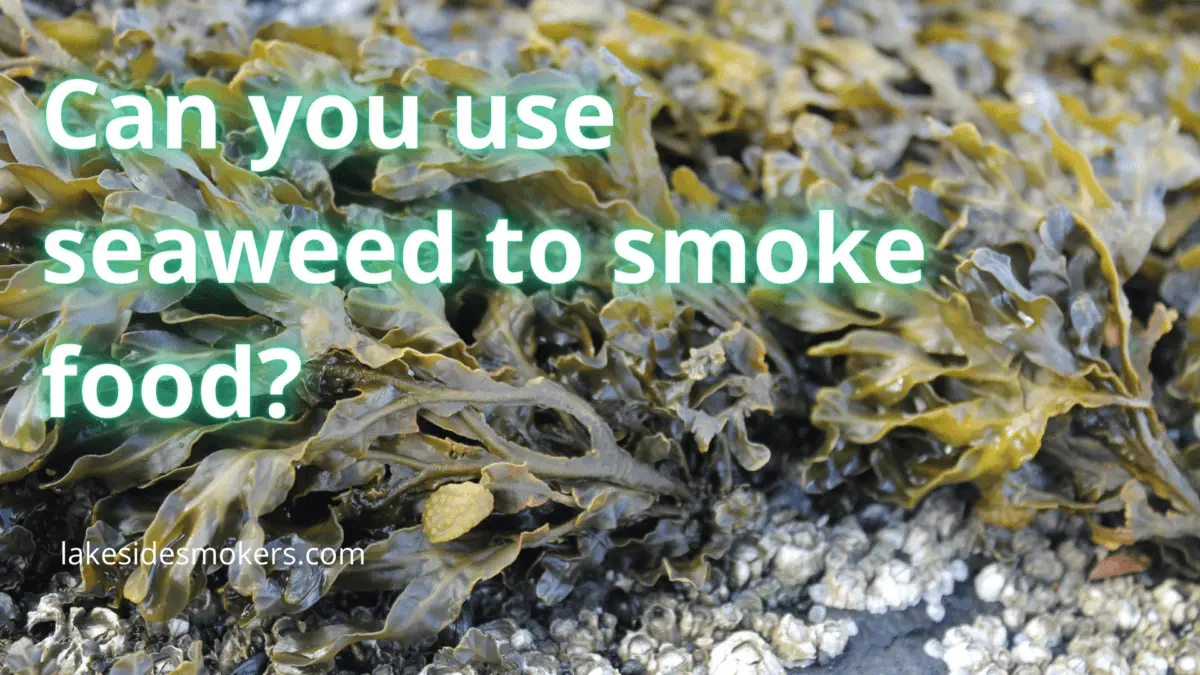Everyone knows you use wood in the form of logs, chunks, or chips to smoke food, especially meat.
But did you know that they also use seaweed to smoke food in some parts of the world?
Yes, just head over to the shores of Ireland and Scotland and watch as locals add some seaweed to their smoking wood for a delicious savory aroma.
Different types of seaweed are used to smoke fish and seafood, such as scallops.

Seaweed is not used to smoke meat like beef, pork, or poultry because the flavor combinations just don’t pair well.
Seaweed is a healthy sea vegetable, and it gives the food a more intense fishy, salty, savory, smoky, and bold taste.
You can use seaweed to smoke fish and seafood when you combine it with another smoking wood like beech. It gives the food a distinct savory and rich flavor, but the smoke is still quite mellow compared to wood smoke.
I’m sharing some of the info I’ve gathered about smoking with seaweed in case you’re feeling adventurous and ready to try something new.
In this post we'll cover:
Can you use any seaweed for smoking?
You can use many types of seaweed or kelp for smoking, but it’s best to be cautious when using randomly foraged seaweed.
It’s essential to use the cleanest seaweed you can find. Some bodies of water are very polluted, and the seaweed can have a rotten or chemical-like smell.
This is the first sign that you should not eat it or use that seaweed to smoke meat.
If your seaweed isn’t clean, the burnt smoke can taste like petrol! Imagine serving smoked haddock with a strong petrol taste – it’s awful and unsafe to eat.
Another important tip is that you shouldn’t use any seaweed you find on the beach – who knows what’s touched it, and it can be tainted.
Ideally, you should cut your own seaweed from the rocks in the water.
Not all seaweed is good to eat because it can have a bitter taste, but most are safe for smoking. You can even dry some out and use it to make Nori if you don’t want to use all of it for cooking.
In the UK, Ireland, and Eastern Canada, they use a specific type of seaweed called dulse to smoke.
It has a red color, and it contains a lot of iodine which helps the body regulate the thyroid hormones and potassium, promoting healthy nerve and muscle function.
How to use seaweed for smoking
Seaweed isn’t like using wood chips to smoke meat. It doesn’t turn into ash once burned. Also, you don’t add it into the wood chip tray.
Instead, when you smoke using seaweed, you have to place it on top of the burning wood and let it smolder like that until it starts creating smoke. It will change color and start burning quickly!
You can do this when you’re camping (check out these best smokers for camping) or near the beach using dry twigs or at home on the smoker or grill.
When I talk about “smoking,” the process is very short – you’re not going to burn the seaweed for more than a few minutes, or else it gets charred and smells bad.
Here’s an easy way to smoke fish and seafood using seaweed and beech wood:
For this example, I’m sharing how to smoke mussels or scallops with seaweed. But it works for fish too and other pre-cooked seafood.
Burn your wood chips/logs
Get your smoker running and have some wood logs or wood chips burning.
Beechwood is actually best for this because it has a mild nutty flavor that complements fish and seafood.
But you can also use alder, which is considered the universal wood for smoking fish and has a milder traditional smoky taste.
Cook the food first
Since you’re only using the seaweed smoke to flavor the food, it has to be cooked first.
So, if you’re making scallops be sure to grill or smoke them with regular wood first until they reach the necessary internal temperature that ensures the food is properly cooked through.
Don’t guess! Use a good instant-read thermometer to gauge the internal temperature of your food
Add the seaweed on top of wood chips/charcoal
Once the food is cooked through, you can add a handful or two of fresh seaweed on top of the smoking wood chips, wood chunks, or charcoal.
It’s important to completely cover the charcoal, wood, or any flames with the seaweed.
Seaweed burns very fast, so you will get smoke for less than 10 minutes. If you need more, add some more seaweed and wait for it to smoke.
Place the food in a pan or pot or aluminum foil if you’re cooking outdoors by the campfire and let it absorb smoke from the burning seaweed.
If you’re using your smoker, let the seaweed smoke until it changes its color to a dark green, almost blackish shade.
The whole process doesn’t take more than a few minutes.
You can even turn smaller seafood like scallops or small herring and smelt over after a couple of minutes so that the smokey flavors penetrate both sides of the flesh.
Takeaway
If you can get your hands on fresh seaweed, you can try adding it to your smoking wood for an interesting and unique smoke flavor profile.
It’s like you’re combining umami with a rich smoky flavor that’s mellow enough to let the natural fish and seafood flavors come through.
Also, if you end up really liking seaweed, you can also smoke it just like you would meat. Trust me; smoked seaweed is a tasty umami snack full of healthy nutrients.
Did you know there are almost 300 species of squids in the ocean? Learn how to cook calamari steak here
